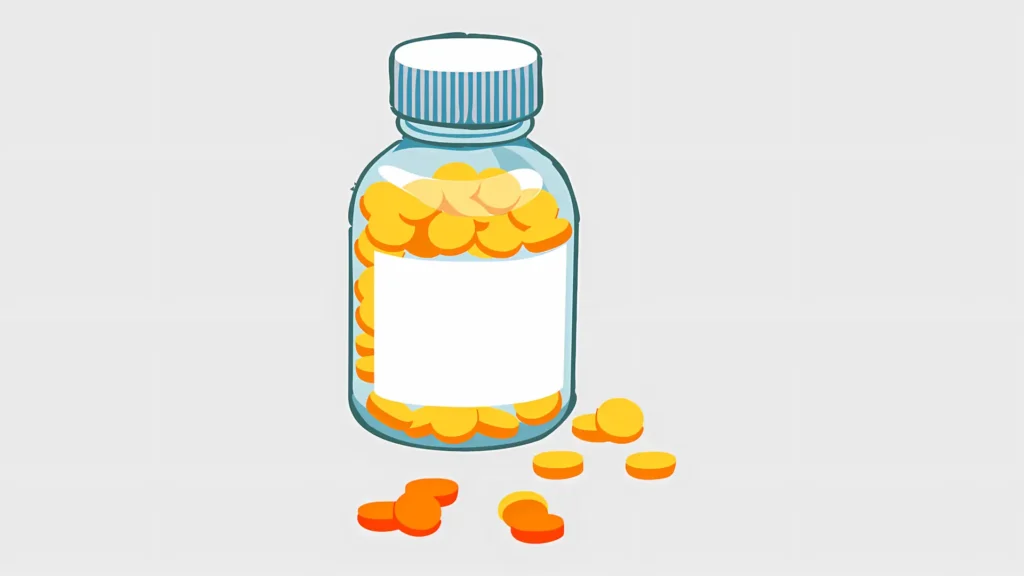Alcohol detox helps you stop drinking safely by managing withdrawal symptoms. In this article, you’ll learn what detox involves, what to expect during withdrawal, and treatment options available.
Key Takeaways
- Alcohol detoxification is essential for recovery, requiring medical supervision to manage potentially life-threatening withdrawal symptoms effectively.
- Withdrawal symptoms can be severe and variable, beginning within 6-12 hours after cessation and progressing to critical conditions within 24-72 hours.
- Choosing between inpatient and outpatient detox programs depends on the severity of withdrawal symptoms, with inpatient programs offering intensive medical support and outpatient programs providing greater flexibility.
The Importance of Alcohol Detoxification

The initial phase of recovery from alcohol involves detoxification, which aims to rid the body of alcohol and address withdrawal symptoms. This crucial step extends beyond merely ceasing alcohol consumption. It prepares individuals for comprehensive long-term treatment by tackling both the physical and mental aspects associated with dependence on alcohol. By expelling all traces of alcohol from their system, patients lay a solid foundation for improved health outcomes and advance towards better overall wellbeing throughout this stage of the detox process. Detox programs also provide nutritional support during the withdrawal process, ensuring that patients receive the necessary sustenance to aid their recovery.
For those who consume large amounts of alcohol, navigating withdrawal can be fraught with unpredictable dangers. Supervision from medical professionals is essential during detox in order to reduce these risks and safely control any potentially fatal complications that may arise. Symptoms might range widely, starting at minor annoyances such as headaches or nausea but possibly escalating to acute conditions like seizures or delirium symptoms—hence why professional oversight is indispensable for ensuring safe passage through the detox journey.
Detoxification programs are available as either outpatient or inpatient services based on individual symptom severity levels—with inpatient options providing round-the-clock healthcare supervision appropriate for severe cases while outpatient settings offer greater personal freedom suitable when symptoms are less intense. The primary aim across both program types remains steadfast: managing withdrawal symptoms securely whilst setting up clients for successful treatments ahead. Recognizing how pivotal proper detoxification is serves as an integral part of embarking upon a path toward lasting sobriety.
Understanding Alcohol Withdrawal Symptoms

The process of alcohol withdrawal encompasses the psychological and somatic effects that emerge when a person discontinues or diminishes their heavy intake of alcoholic beverages. About half of those with an alcohol use disorder exhibit symptoms once they stop drinking. Distinct from the transient discomforts associated with a hangover, alcohol withdrawal syndrome poses serious risks to health and requires medical care.
Initially, one might experience milder manifestations such as slight anxiety, upset stomach, headaches, difficulties sleeping, perspiration, accelerated heart rate, and shaky hands. As time progresses, these indicators typically evolve in intensity ranging from minor annoyances to moderate disturbances up to severe complications. In its most acute form—marked by conditions like delirium fever and intense seizures related to withdrawal—it’s crucial for individuals afflicted to receive prompt medical support in order to manage these severe consequences appropriately. Early recognition is key for seeking professional assistance promptly during this critical detoxification period.
A variety of elements including history of alcohol consumption levels frequency previous instances involving withdrawals age concurrent health issues dietary considerations along with mental well-being influence both how long as well as how intensely these reactions manifest themselves following cessation drinking habits.
Repeat episodes can worsen due to cyclical aggravation known Kindling effect thereby placing persons who have previously encountered difficulty withdrawing at increased risk of experiencing harsher adverse outcomes later on Being aware of potential warning signs correlated triggers aids preparations respective recovery efforts while also ensuring needed clinical services are obtained.
Timeline of Alcohol Withdrawal
The duration of alcohol withdrawal can greatly differ from one individual to another, with the period typically extending anywhere between several days to multiple weeks. Symptoms associated with withdrawal from alcohol usually emerge within 6-24 hours following the final alcoholic beverage and reach their highest intensity after about two or three days. During this critical phase, vigilant supervision and treatment are essential as symptoms can span a spectrum from mild discomforts to those that pose a threat to life.
Throughout the detoxification process, individuals may experience varying degrees of symptom intensity, encountering both spikes and declines in severity. While most signs of alcohol withdrawal start diminishing after the initial week, some lesser symptoms might persist for an extended time. Some people experience prolonged withdrawal symptoms, like insomnia and mood changes, that can last for weeks or months, making ongoing support and treatment essential.
Understanding this timeline is crucial for both those undergoing withdrawal and their support systems as it aids in preparing for and addressing each stage of the detoxification journey more effectively while enhancing safety.
First 6-12 Hours
Withdrawal symptoms usually begin within 6 to 12 hours after the last drink. During this initial phase, individuals may experience headaches, anxiety, shaking, nausea, and irritability. Insomnia, tremors, sweating, increased blood pressure, and alcohol cravings are also common. The early hours of detox are often marked by gastrointestinal discomfort as well. Mild symptoms often start 6-12 hours after your last drink, while serious symptoms can start during the next 12-48 hours, highlighting the importance of timely medical intervention.
Effectively managing these symptoms during the first 6-12 hours sets the tone for the rest of the detox process. Challenges like increased blood pressure and intense cravings make medical supervision vital for safety and comfort.
12-24 Hours
Within the span of 12 to 24 hours, there can be a considerable intensification of symptoms. People experiencing withdrawal might suffer from confusion, shaking of the hands, and potentially seizures. It’s also not unusual for them to experience hallucinations and panic attacks, which adds complexity to controlling their withdrawal symptoms.
It is essential during this stage that individuals receive medical oversight as it plays a pivotal role in efficiently managing escalating withdrawal symptoms and preventing severe reactions. Healthcare providers are instrumental in quickly responding to acute responses, thereby minimizing complications and offering necessary assistance.
24-72 Hours
Typically, the height of withdrawal symptoms from alcohol reaches its zenith within 24 to 72 hours following cessation. Throughout this critical time frame, individuals might endure harsh withdrawal signs that include confusion, shakes in the hands, and seizures related to alcohol use. The threat of encountering perilous conditions like delirium tremens escalates substantially during these times. Delirium tremens (DTs) can occur within the first 48 to 72 hours after the last drink and can be fatal, underscoring the necessity of medical supervision.
Having medical professionals oversee the process is crucial during these pivotal days for addressing any intense symptoms that may arise. With vigilant oversight and prompt medical intervention when necessary, dangers linked with a medical crisis amidst severe withdrawal from alcohol can be considerably lessened, thus ensuring a more secure environment for detoxification.
Medications Used in Alcohol Detox

During the process of alcohol detoxification, medications are essential in mitigating withdrawal symptoms and aiding in the prevention of alcohol withdrawal by maintaining a chemical equilibrium. Frequently utilized long-acting sedatives such as benzodiazepines, including Librium, help control various symptoms like sleeplessness, anxiety, and muscle spasms. This makes undergoing treatment for alcohol withdrawal more bearable. Benzodiazepines are most frequently used to treat withdrawal symptoms during the alcohol detox phase, highlighting their critical role in managing this challenging process.
In order to assure both safety and efficacy throughout detoxification, healthcare professionals oversee the administration of these and other medications. Addressing any accompanying side effects can be managed with some of the most widely used drugs within this context. The overarching aim when employing medication during detox is to foster a safer environment that also enhances comfort levels for individuals undergoing treatment. Chlordiazepoxide and diazepam are two types of benzodiazepines prescribed most often in an inpatient rehab setting, ensuring effective management of withdrawal symptoms.
Benzodiazepines
During the detoxification from alcohol, benzodiazepines serve a vital function in controlling withdrawal symptoms and imparting a sense of tranquility. These drugs are quite efficient at alleviating anxiety, which helps make the experience more bearable for those undergoing treatment. They are essential in averting seizures, which pose a significant danger during the withdrawal phase.
Benzodiazepines mitigate numerous other symptoms associated with withdrawal, leading to a more secure detoxification process. Their deployment highlights how crucial pharmacological management is to facilitating an untroubled and successful detox journey.
Naltrexone
Naltrexone serves as a pharmaceutical aid in the process of alcohol detoxification, predominantly utilized to diminish the desire for alcohol. It functions by blocking the euphoric sensations associated with alcohol consumption, thereby aiding individuals in preventing lapses into drinking. This medication comes in two forms: an oral tablet and an injectable variant known commercially as Vivitrol.
It is recommended that persons should postpone commencing Naltrexone treatment for a period ranging from 7 to 10 days following a relapse to avoid any potential negative effects.
Vivitrol
Vivitrol, the brand name for Naltrexone, is used to prevent cravings and relapses. It plays a significant role in maintaining sobriety post-detox by reducing alcohol cravings.
Using Vivitrol helps individuals stay committed to their recovery by minimizing the desire to consume alcohol.
Inpatient vs. Outpatient Detox Programs

Deciding on the appropriate detox program is crucial, taking into account aspects such as the intensity of withdrawal symptoms and personal situations. Detoxification can be successfully carried out in both inpatient and outpatient facilities, but selecting one over the other hinges on patient traits and the likelihood of facing life-threatening issues during withdrawal.
For individuals who might experience severe withdrawal symptoms, those with suicidal tendencies, or patients who have previously had life-threatening complications during detoxification processes, an outpatient program may not be suitable. Understanding how these programs differ allows people to choose their treatment options with a well-informed perspective.
Inpatient Detox Programs
Medically supervised inpatient detox programs offer a structured residential environment dedicated to treating alcohol use disorder, with benefits such as continuous medical attention, expert supervision, management of serious complications, and isolation from environments that may trigger substance abuse. These programs are often the preferred choice for individuals who might not find outpatient detox suitable. Inpatient detox programs usually require patients to stay overnight in a facility for medical supervision, ensuring a controlled and safe environment for recovery.
One notable drawback of these residential treatment programs is their higher expense when compared to outpatient alternatives. Despite this cost difference, the all-encompassing care and assistance offered by inpatient facilities can validate the investment by providing a safer and more effective approach to detoxification. Inpatient detoxification programs often have a higher completion rate compared to outpatient programs, further emphasizing their effectiveness in supporting recovery.
Outpatient Detox Programs
Undergoing outpatient detox for alcohol withdrawal entails administering doctor-prescribed medications within the comfort of one’s home. The initial evaluation for this mode of treatment usually spans 1 to 2 hours, while follow-up appointments tend to require just 15 to 30 minutes each. Outpatient detox offers a notable advantage by granting patients increased flexibility, enabling them to uphold their employment responsibilities and personal relationships with minimal interruption.
Securing physicians agreeable to supervising such treatments can pose a challenge in an outpatient setting, along with an elevated potential for adverse outcomes stemming from improper medication use. This autonomy afforded through outpatient care may prove counterproductive for certain individuals, as it could complicate the management of their recovery process.
The Role of Turning Point of Tampa in Alcohol Detox

Since 1987, Turning Point of Tampa has been treating alcohol addiction. Turning Point will treat withdrawal symptoms by facilitating medical alcohol detox services for acute alcohol withdrawal and severe alcohol withdrawal as part of the alcohol detox process. The treatment center prides itself on its structured substance abuse treatment programs delivered by highly experienced professionals within a supportive and residential setting. This establishment is dedicated to creating an atmosphere that prioritizes both privacy and assistance during the recovery process from substance abuse.
In their role as part of the broader substance abuse treatment program at this facility, they boast a detoxification service area that’s not only clean and up-to-date but also welcoming—ensuring comfort while providing the necessary support for clients undergoing detoxification and wanting to no longer drink alcohol. A dedicated nursing staff offers round-the-clock care complemented by daily consultations with medical doctors.
Holding licensure as an addiction and detox provider in Tampa, Florida, Turning Point of Tampa maintains partnerships with numerous insurance providers through their in-network status.
Transitioning from Detox to Ongoing Treatment
It is essential for individuals recovering from alcohol use disorder to engage in post-detox treatment, which provides tools and strategies for post-acute withdrawal syndrome, sustaining abstinence and managing triggers connected with their condition. Successful detoxification programs typically incorporate both counseling and educational components to facilitate the progression into continued care. Key modalities used in treating alcoholism include behavioral therapies like cognitive-behavioral therapy (CBT), which play a pivotal role by aiding clients to alter detrimental thought patterns and behaviors tied to alcohol consumption. Long-term alcohol use often requires psychological, family, and social interventions for successful recovery, ensuring a holistic approach to overcoming addiction.
Sustained recovery relies heavily on ongoing support systems such as aftercare groups, along with consistent counseling sessions that offer vital emotional backing and societal reinforcement. The development of nurturing relationships, embracing healthy living habits, plus instituting a regulated routine all significantly minimize relapse risks while maintaining an emphasis on rehabilitative progress. This comprehensive approach towards wellness is fortified through family therapy as endorsed by the American Psychiatric Association, underlining its significance within the recovery journey.
Preventing Relapse After Detox
Identifying the catalysts for urges to consume alcohol is essential in averting a return to substance use. A relapse typically unfolds across emotional, mental, and physical phases. It’s vital that individuals steer clear of former routines and settings linked with alcohol consumption in order to preserve their abstinence from drinking. The agency places emphasis on delivering continuous treatment as well as post-treatment assistance to foster sustained recuperation.
Grasping the progression through which relapses happen and employing effective tactics for handling incitements can enhance an individual’s ability to successfully manage their recovery process. Turning Point of Tampa offers all-encompassing aid designed to assist clients in maintaining their dedication towards a life free from alcohol dependence.
Summary
The initial stage in the journey to recovery from alcohol addiction is alcohol detoxification. This process provides a controlled setting to effectively manage withdrawal symptoms and lay the groundwork for Treatment. It’s essential for those undergoing detox to be aware of its significance, recognize potential withdrawal symptoms, and be informed about the expected timeline as well as any medications that may assist them throughout this phase. Whether opting for an inpatient or outpatient program, each presents unique advantages and hurdles with the shared goal of facilitating a secure detox experience. Turning Point of Tampa is instrumental in assisting individuals during this critical period and continues its support post-detox to deter relapse. Through all-encompassing care coupled with dedication towards maintaining sobriety, one can attain enduring recovery leading to a more healthful lifestyle devoid of alcohol dependence.
Frequently Asked Questions
What are the potential severe symptoms of alcohol withdrawal?
Severe seizures and delirium symptoms are among the potential serious symptoms of alcohol withdrawal that could be life-threatening.
If you find yourself experiencing these symptoms, it’s imperative to get medical help right away.
How long does alcohol withdrawal typically last?
Alcohol withdrawal typically lasts from a few days to a few weeks, with symptoms peaking between 48 to 72 hours after the last drink.
What medications are commonly used to treat alcohol withdrawal symptoms?
To mitigate the symptoms of alcohol withdrawal, benzodiazepines serve as the main pharmaceutical treatment. They efficiently forestall convulsions and help to reduce anxiety associated with withdrawal from alcohol.
What is the role of the nursing staff in the detox process at Turning Point of Tampa?
At Turning Point of Tampa, the nursing team is essential to the detoxification process. They deliver around-the-clock assistance and coordinate daily consultations with physicians. This guarantees that patients have ongoing backing and medical supervision throughout their treatment.
How does Turning Point of Tampa ensure a safe environment for detox?
Turning Point of Tampa ensures a safe environment for detox by prioritizing privacy and support, creating a secure space conducive to recovery from substance abuse.
Sources:
NIH.gov: An Overview of Outpatient and Inpatient Detoxification

